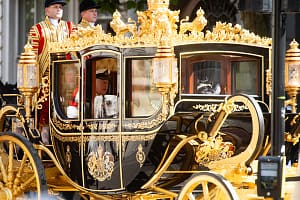Minimum workplace pension contributions would increase to 12% under plans put forward by insurance companies today.
Under current rules, the minimum contribution stands at 8% of ‘qualifying earnings’ – a level most agree will fail to deliver a decent retirement for millions of people.
ABI proposal would see minimum contributions gradually scaled up over the next 10 years.
Workers could be given the option to ‘opt-down’ contributions from 12% to 10% under the proposals.
Pressure also growing on Government to address self-employed retirement saving challenge.
Tom Selby, head of retirement policy at AJ Bell, comments: “The first aim of automatic enrolment was to get more people saving something for retirement. Having achieved that initial goal, with millions now saving in a pension for the first time, the next logical step is to address adequacy.
“It is widely accepted that the current minimum contribution rates are too low to ensure the majority will enjoy a decent standard of living in retirement.
“This will particularly be the case for those in their 40s and 50s who might have missed out on the glory years of defined benefit pensions and have less time than younger savers to build and grow an auto-enrolment pot.
“Setting in train a plan to gradually raise minimum contribution rates and ensuring a fair balance between employers and employees is a sensible approach. Baking flexibility into the contribution increases so employees aren’t left with an ‘all or nothing’ choice between retirement saving or not in the workplace should help reduce the risk of opt-outs spiking.
“Before that happens, the Government needs to implement the recommendations of the 2017 auto-enrolment review, including removing ‘qualifying earnings’ bands so every pound earned qualifies for a matched contribution and reducing the minimum age from 22 to 18.
“Clearly this is hugely challenging against a backdrop of spiralling living costs, but every year of delay will exacerbate the risk of a future retirement crisis.”
Tackling the holes in automatic enrolment
“An arguably bigger retirement challenge exists outside the workplace, with millions of self-employed workers potentially sleepwalking towards disaster in later life.
“As things stand, self-employed workers are not covered by auto-enrolment and, without urgent action, risk ending up relying almost entirely on the state pension.
“To put the challenge in context, the average pension wealth of an employee approaching state pension age is £91,400. For a self-employed worker, the figure is just £16,100.
“There are various options the Government could pursue to address this problem. The Lifetime ISA has the potential to be an ideal retirement saving vehicle for the self-employed but is held back by the 25% early withdrawal charge and the 18-39 age restrictions.
“Reducing the withdrawal charge to 20% – so it just aims to return the upfront Government bonus – and scrapping the age restrictions would make the product more attractive for the self-employed.
“Using the National Insurance (NI) system to allow people to divert money into a Lifetime ISA or a pension is also worth exploring. The Government could increase NI rates for the self-employed, for example, but give them the option of diverting this increase into a savings vehicle.
“This would undoubtedly be controversial but, given the scale of the challenge, radical ideas need to be explored.”






Leave a Comment